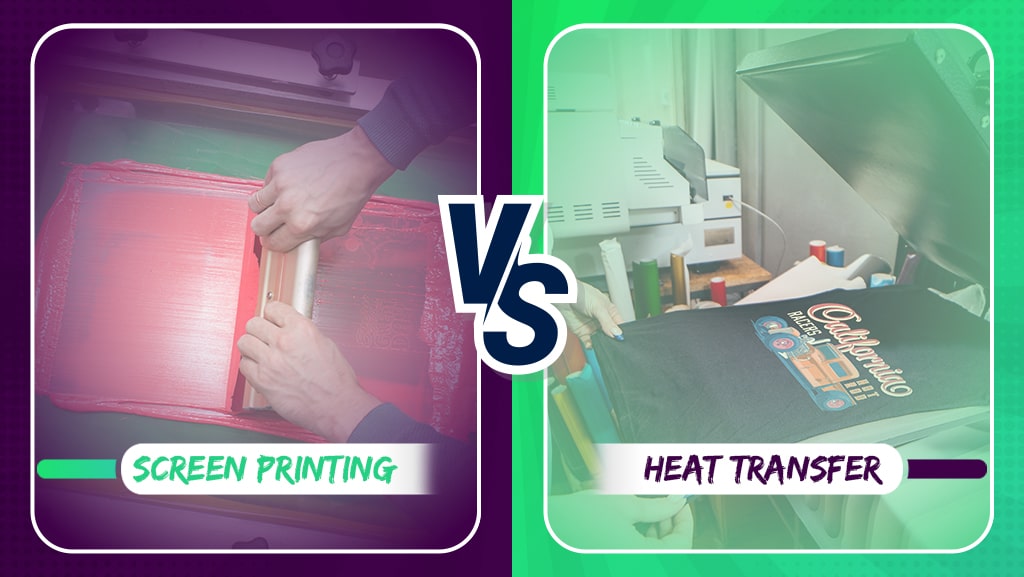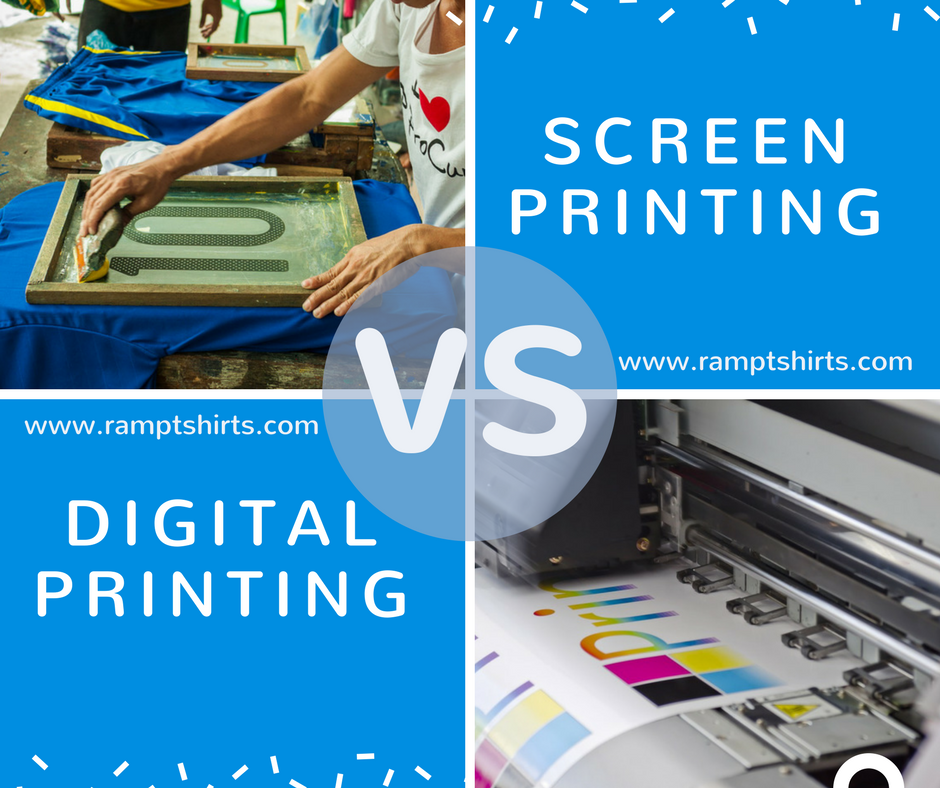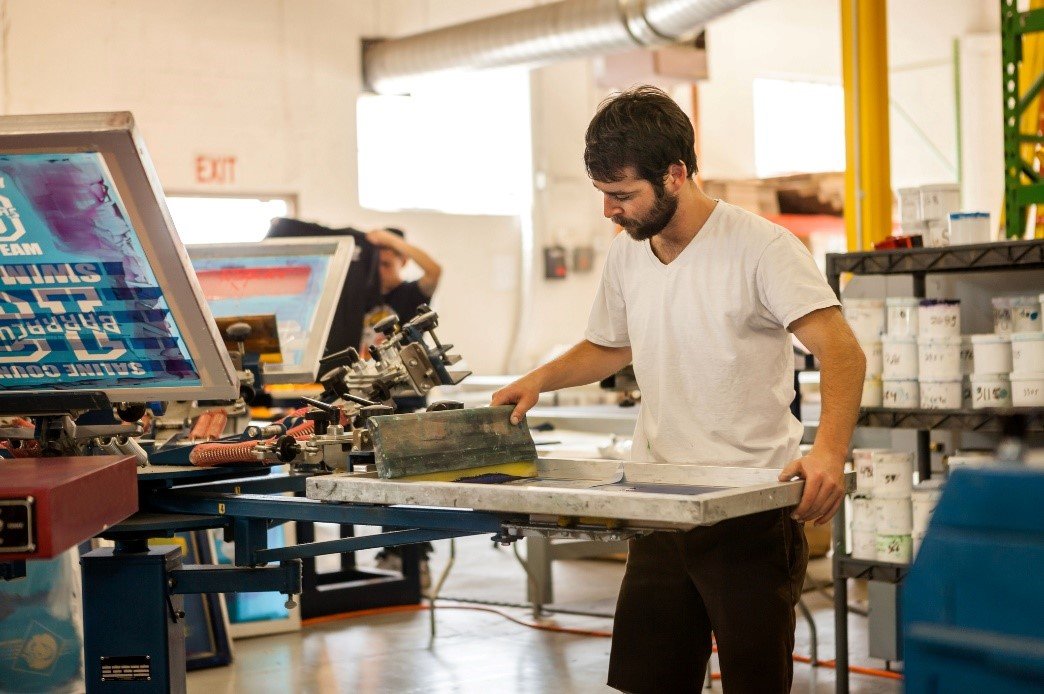6 Simple Techniques For Tx Tees
6 Simple Techniques For Tx Tees
Blog Article
Things about Tx Tees
Table of ContentsFascination About Tx Tees7 Simple Techniques For Tx TeesSee This Report on Tx TeesTx Tees Fundamentals ExplainedFacts About Tx Tees UncoveredThings about Tx TeesSome Known Facts About Tx Tees.
Add up other prices, like the number of energies it takes to run the shop and the price of ink and solution per design. Take the print listed below.The emulsion needs to only be a few cents since you 'd only require to layer one screen for this task. Exactly how much should you bill per shirt to make a revenue? Generally, printers try to make up to 45% earnings on a print job. Right here's a table to assist you determine that: overall expense per thing percent of preferred earnings as a decimal (example:.25 or.45) revenue made per thing per job Now let's talk concerning the success of DTF.

With DTF, you can publish a handful of tee shirts, or just one. Both display printing and DTF have their specific niches in the world.
The Facts About Tx Tees Uncovered
The very best method to recognize? Ask around and see what print shops like your own are doing. screen printer. Attempt both out and see which you like far better
When you're choosing what kind of printing technique to make use of for publishing your artwork designs on your garments, it is essential that you recognize the distinctions between these two techniques so you can make best use of results while reducing costs. Screen printing is one of the most commonly used method for printing styles on textiles.
DTG printing is likewise referred to as place or straight to garment printing due to the fact that it prints only what is needed instead of making a screen as screen printers do. https://tx-tees-45701767.hubspotpagebuilder.com/blog/txtees02. Screen printing functions by screen filler squeegee display printing ink screen mesh screen, after that transferring the photo to garment utilizing warmth and/or pressure
The DTG printer uses unique dye-sublimation inks that are applied right into a pre-designed image by an electronic printing system. The inks end up being component of the fabric, permitting lively shades and phenomenal detail. It's additionally called place or direct to garment printing due to the fact that it prints just what is needed rather than making a display as screen printers do.
About Tx Tees
It's much faster - you can print a fullcolor photo in minutes, as opposed to hours for display printing. Second, there's no established up time or prices involved - you can print any design you like, without having to produce a display. Third, there's no waste - since screen printers screen print one style at once, they need to evaluate each shade independently.
The paper is really pricey and can just be made use of as soon as. Once it's published on, it needs to be discarded. - The initial purchase price is lower than the upfront financial investment of DTG printers- You can publish multi-color layouts one display at once as opposed to needing to print each color separately like DTG printing.

Some Known Details About Tx Tees
However, rather of using screen mesh as display printers do, dye sublimation printers utilize laser modern technology to transfer your pictures onto garments or paper. A warm procedure transfers the dye from its solid-state straight right into the gas phase which consequently integrates it onto fabric substrates when they are swiftly heated to high temperatures under high stress.
Sublimation printing is green. It uses much less water than screenprinting, and due to the fact that it doesn't include the usage of hazardous solvents, it's risk-free for all kinds of apparel. The dye sublimation inks are likewise odor-free when healed, unlike screen printers that utilize dangerous chemicals during the screen printing process that leave behind an unpleasant odor.
They likewise conserve cash on pricey tools like direct exposure units because dye sublimation printers don't need a UV direct exposure system or a flash remedy stove that is commonly made use of in screen printing (screen printing shop). What is direct to garment printing (DTG Printing)? DTG printing is a digital screenprinting process that publishes straight onto textile making use of specialized inkjet printers
What Does Tx Tees Do?
DTG printing uses lots of benefits over conventional screenprinting, including the ability to publish photo top quality photos, higher color vibrancy, and the capacity to publish designs on darker textiles. DTG printers function by heating the fabric ink until it develops into a gas. The gas then penetrates the material, bonding with the fibers to create an irreversible print.

Display printers just prepare their screen then start printing until they run out of product or ink.- There is a large range of skilled screen printers around the world, which can be useful for novices. - It's a slower process - screen printers frequently have to wait for the ink to completely dry prior to they can publish the following color- Screen internet printers require manual labor, so there's a higher knowing curve and it takes longer to generate a top quality design- Screen printing isn't as accurate as DTG printing, so you may obtain some "blood loss" of shades from one part of the image onto an additional otherwise done appropriately.
Tx Tees for Beginners
However, as opposed to utilizing screen mesh as display printers do, dye sublimation printers make use of laser innovation to move your pictures onto garments or paper. A warm process transfers the color from its solid-state directly right into the gas phase which consequently fuses it onto textile substrates when they are quickly heated to high temperature levels under high pressure.
Sublimation printing is green. It utilizes much less water than screenprinting, and since it does not involve using damaging solvents, it's secure for all sorts of clothing. The dye sublimation inks are additionally odorless when treated, unlike screen printers that utilize harmful chemicals throughout the display printing process that leave an unpleasant odor.
They likewise save cash on costly devices like direct exposure units because color sublimation printers don't require a UV direct exposure unit or a flash remedy stove that is generally made use of in display printing. What is direct to garment printing (DTG Printing)? DTG printing is an electronic screenprinting process that publishes straight onto fabric utilizing specialized inkjet printers.
Tx Tees Can Be Fun For Anyone
DTG printing offers many benefits over traditional screenprinting, including the ability to print photographic top quality photos, better shade vibrancy, and the capacity to publish styles on darker materials. DTG printers work by heating the fabric ink till it develops into a gas. The gas after that penetrates the material, bonding with the fibers to produce a long-term print.
Report this page